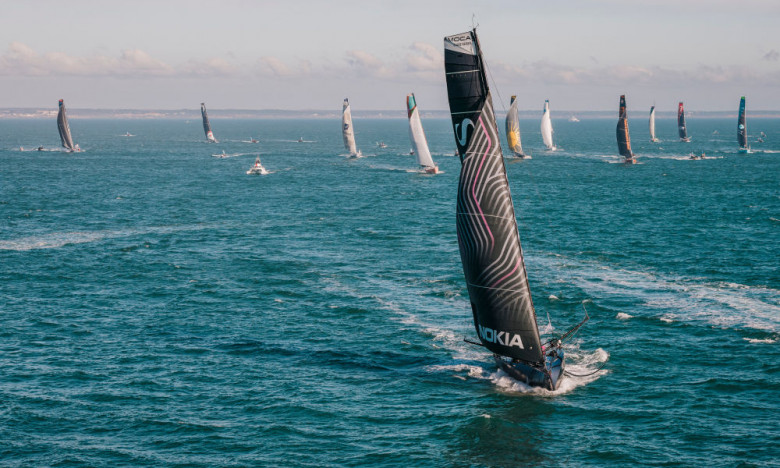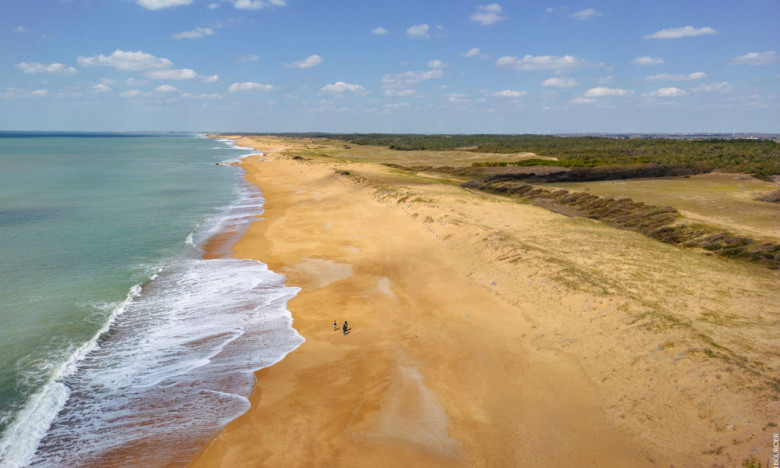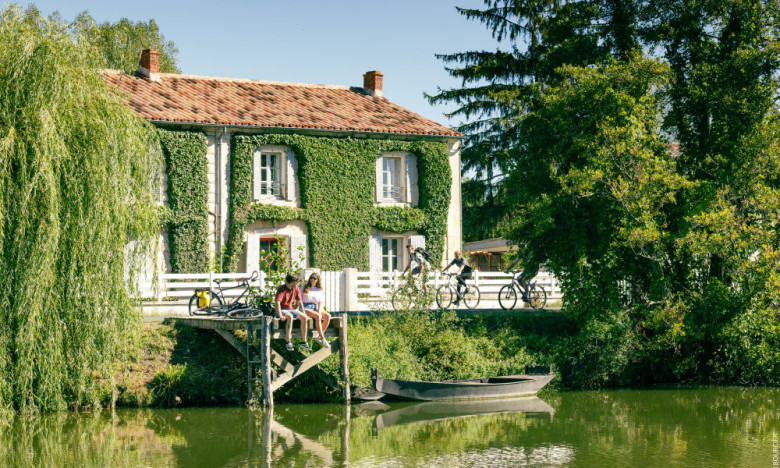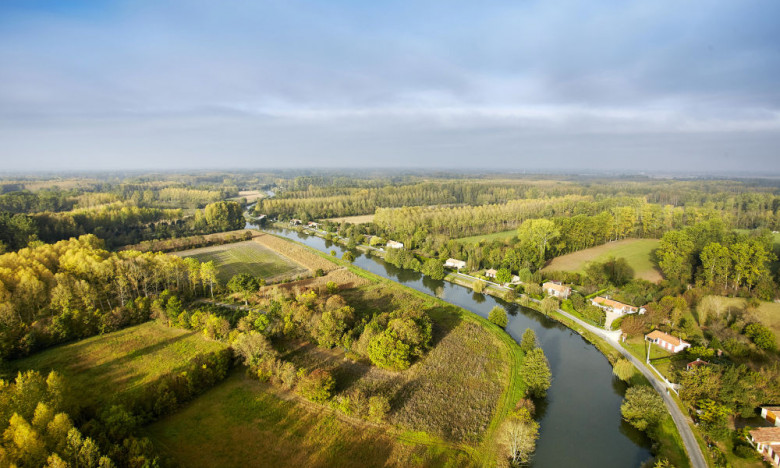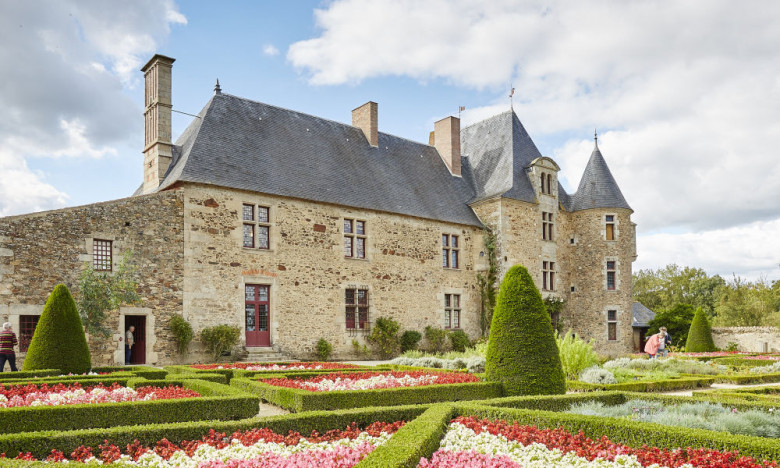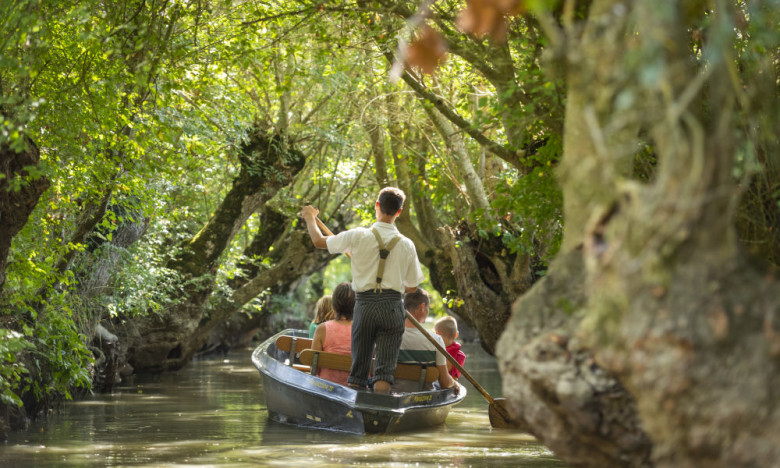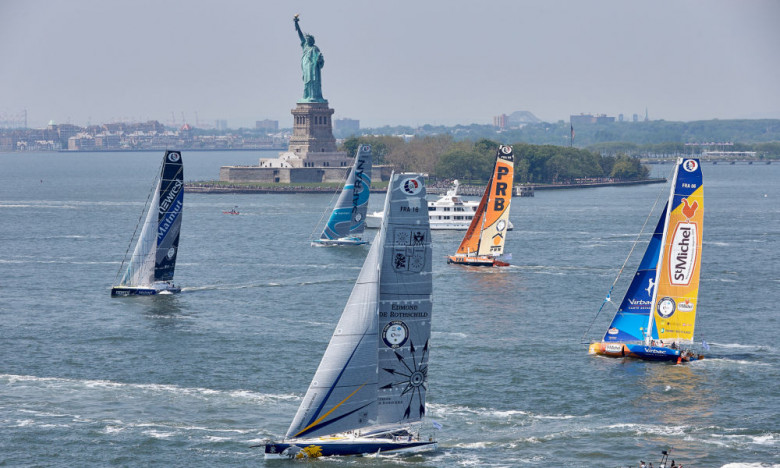Move over Fleet Week, the Vendée and Vendée Globe are coming to town!
The New York – Vendée Sables d’Olonne is a major sailing race that will depart from the New York Harbor on May 29, 2024. It is the last qualifier race before the Vendée Globe—and is the only transatlantic race to leave from the Big Apple. Before embarking on a 3,200-mile journey across the Atlantic Ocean, on Friday, May 24, the IMOCA* sailboat skippers will entertain NYC residents and visitors alike. Throughout the day, there will be several runs of the Liberty Race, a spectacular exhibition regatta including 25 of the 31 participating IMOCAs at the foot of the Statue of Liberty.
Then, on November 10, 2024, the 10th edition of the Vendée Globe, a.k.a. the Everest of Seas--a solo, non-stop, and unassisted race around the world, will set sail on this great adventure from the Vendée’s Sables d’Olonne. 40 skippers will depart this region’s renowned seaside town which boasts magnificent beaches and one of the most beautiful bays in the world.
La Vendée at a glance: A very special destination between land & sea
Located in the region known as the Atlantic Loire Valley, the Vendée county—or as the French say, department—lies between Nantes and La Rochelle, making it easily accessible from Nantes by TGV train or air from Paris. It is the perfect spot for family, active, nature-lovers and foodie vacations.
Maritime heritage
La Vendée is home to the Côte de Lumière, the county’s 155-mile-long Atlantic coastline, including an 87 mile stretch of wide sandy beaches. In addition to more than 2300 hours of sunshine per year like its neighbors to the south, the wild and large beaches have a very safe low slope—perfect for families as well a wealth of nautical activities ranging from challenging surfing and kite-surfing to horseback riding on the beach and, of course sailing. Off-shore you have two beautiful islands: the rugged, beautiful and more distant Ile d’Yeu—accessible by ferry only and Noirmoutier. A hop, skip and a jump from the coast, Noirmoutier—better known as the Island of Mimosas—can be reached by bridge or more challengingly by hiking at low tide Le Passage du Gois submersible passage—which can also be crossed by car, the operative rule being in all cases to keep an eye on the tides. It is also known for its charming villages, authentic salt marshes and its Maritime Heritage Center.
There are 18 seaside resorts including the northernmost Saint-Jean-de-Monts, a lively coastal town with several sandy beaches, inland marshes and beautiful pine forest. It shares with Saint-Gilles-Croix-de-Vie with nearby and southernmost Saint-Hilaire-de- Riez the coastal marshland Marais Breton-Vendéen. Saint-Gilles is also France’s first sardine port. At the center of the Côte de Lumière lies the Sables d’Olonne known for its long sandy beaches and beautiful bay and of course as the departure point of the “Everest of the Seas”—the Vendée Globe round-the-world sailing competition. The southern most village is La Tranche-sur-Mer, otherwise known as the “Little California,” appreciated for its beaches lined with dunes and hiking trails. And let’s not forget the great natural area and sanctuary for fauna and flora of the Payré Estuary which nestled between Les Sables and La Tranche.
Inland towns & must-see sites
Le Bocage: Full of Culture, Heritage and Beauty The Vendée’s bocage is emblematic of the county’s heritage and culture. Inland, and centrally located. Like in Normandy, it is a farmland area criss-crossed by hedges and trees. The Bocage is dotted with “Petites Cités de Caractère” or Small Towns of Character—of which there are nine in total throughout the Vendée. They include, Mallièvre—the smallest of them all, an ancient weaving village built on a rocky outcrop overlooking the Sèvre Nantaise River, a tributary of the Loire. Mouchamps boasts a church which stands on the site of the medieval chapel of what first was a 13th century castle; Vouvant on a bend in the river Mère has a church that dates back to the 11th century, a Medieval fortress and a tower built in 1242.
Le Bocage is also home to the remarkable Puy du Fou theme park and the Domaine de La Chabotterie—an 18th-century estate spread over 118 acres of lush forest and meadows—which will host May 17 to 26, 2024 the prestigious international horticultural event—Les Floralies—that usually takes place every five years in Nantes, but has moved to the nearby Vendée. La Chabotterie is also a site from which to understand the 5-year Vendée war during the French Revolution. In addition to the beautiful grounds of La Chabotterie, the region is known for other remarkable gardens.
Other cities and towns of note include: Fontenay-le-Comte, the capital of the Vendée until 1804, is notable for its streets lined with Renaissance and mansions, guarded by a Renaissance jewel, the Castle of Terre-Neuve. The pentagon-shaped capital of La Vendée La Roche-sur-Yon was rebuilt by Napoleon with at its center a huge square boasting four natural ponds with wood and steel statues of animals. And charming Luçon boasts a 13th-19th cathedral and cloisters and its 279-foot spire.
In addition to the remarkable gardens beautiful marshes and wetlands like the Marais Breton-Vendéen there is the Marais Poitevin which it shares with its neighbor to the South—the Charente-Maritime. A lush & biodiverse 198,000-acre the Marais Poitevin, is France’s second largest wetland, parts of which are known as the Green Venice. It has been classified as a Region Natural Park and ‘Grand Site de France’—33 of France’s most notable natural sites. Nature-lovers will enjoy exploring the marais by local flat-bottomed gondolas (and other environmentally friendly means,) with curious otters popping out see what’s happening and enjoy this nature reserve’s immense variety of fauna and flora—250 species of birds, 40 of fish, 60 different kinds of dragonflies and 80 types of butterflies. The Marais Poitevin is also known for its 1000-year-old abbeys.
Gastronomy in La Vendée
In addition to fresh seafood from monkfish, red mullet, bass and sardines to blue lobster, langoustine, Bouchot mussel and of course Atlantic oysters, the Vendée is also known for its Bocage grown Mogette white bean, its distinctive brioche vendéenne and Préfou garlic bread. It also boasts the bonnottes, the famed Noirmoutier potatoes. And let’s not forget the fleur de sel produced in Noirmoutier and other sites and the Jambon de Vendée—the third most popular raw ham in France. It is cured by hand in dry salt, rubbed with wine, brandy and natural aromatic herbs. La Vendee also produces mostly red and roses wines, but also white wines and is also known for its local and craft beers.
*IMOCA: International Monohull Open Class Association. These very powerful monohull sailboats that can reach speeds of up to 40 knots—about 46 miles per hour.
For more information on La Vendée, visit in-vendée.com.


